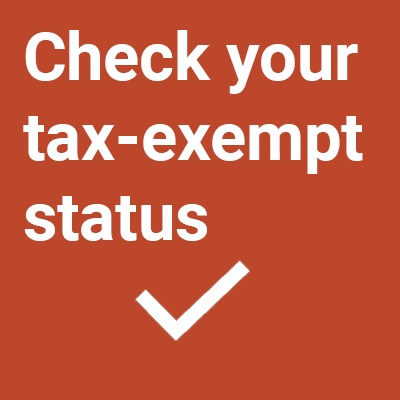Nearly all nonprofit organizations in Iowa have at least one partnership with a college or university, often partnering with more than one. This is among the findings of a study released recently by Iowa Campus Compact, a statewide coalition of colleges and universities committed to educating students for engaged citizenship and creating community-campus collaborations. Most of these partnerships center on student opportunities including class projects, individual student experiences such as internships, and group student organization volunteerism.
Community organizations often receive unique expertise and skills from these students or the faculty and staff working with them. In return, students and higher education institutions receive enhanced education through the real-world, skill-building experiences that these organizations provide. But not all partnerships are created equal and this study provided a path for both higher education and nonprofits to consider how to make the most of them. Over 300 nonprofit organization staff members participated from a variety of organizations, roles, and locations across the state.
Key Study Findings
- Successful partnerships require a solid foundation. The first steps in building a partnership are critical to the process but are often neglected. We can ensure greater levels of success by taking more time in the beginning to evaluate possibilities and strategize for the long term.
- Effectively managing student experiences is vital. The human capital of student work is key to community impact and student learning. Providing structure for this work is needed to maximize outcomes and strengthen partnerships.
- Investing time and capacity is difficult. Effective partnerships require an investment of time that both sides of the partnership struggle to provide. This is important to acknowledge and plan for from the beginning.
- Partnerships exist between individuals. While partnerships are viewed as institutional, ultimately, individual relationships guide their success or failure. This means that individuals need to adequately prepare to engage in meaningful and effective partnerships.
- Nonprofits have difficulty navigating the complexity of higher education. The complexity of higher education departments and roles remains a barrier to initiating and sustaining partnerships. Minimizing this complexity is important to creating equitable and impactful partnerships.
These findings led to six recommendations for both higher education and nonprofits:
- Focus on quality over quantity
Less is more with partnerships. Trying to meet all demands results in both partners being spread too thin to make any real impact.
- Move from reciprocity to co-creation
While reciprocity ensures a balance of benefits, co-creation deepens those benefits and creates new possibilities.
- Establish & sustain organizational infrastructure
Successful partnership requires structure to define how the partnership can be initiated, maintained, and sustained.
- Strengthen student preparation and accountability
When student-based projects are well-structured, students are held to a higher standard for their work and partnerships are more likely to succeed.
- Build individual capacity for partnership
While infrastructure is key, many individuals across organizations need to play a role in the success of partnerships. These individuals need targeted support and development that prepare them for this role.
- Explore other forms of partnership
Limiting partnership to student experiences may not be the best fit for higher education (HED) or community-based organizations (CBOs). Instead, identify untapped areas to build new or deepen current partnerships.
What does this mean for you?
Regardless of your position within a nonprofit organization, there are concrete ideas you can take away from these results. The first is to consider whether higher education partnerships can be a key strategy for achieving your goals. This will help you to determine which goals best align and allow you to allocate time and resources appropriately. That way you can say no when a higher education opportunity doesn’t align. Saying no is an important part of staying focused on quality over quantity.
This also points to the need to take the time on the front end to consider whether a partnership is a good fit. As one of our study participants put it: “Don’t rush the dating phase.” There are a number of tools including the Give-Get Grid and the Partnership Canvas that can help facilitate a conversation that builds a strong foundation.
It’s possible that the main question you’re asking is how to get started. As the study illuminated, higher education can be very complex to navigate. Most Iowa Campus Compact members have an office providing a leadership role in community engagement. Look for keywords like service learning, community engagement, experiential learning or community-based learning. Consider approaching several people to have coffee to learn more about the institution and potential partners rather than approaching someone right away with a specific request for volunteers.
You might also want to consider the difficulty of navigating your organization. Do you have a volunteer coordinator? Written, compelling job and project descriptions? Taking the time to brainstorm and write up back-burner, capacity-building projects can help you be ready as opportunities for collaboration arise. This also means thinking beyond one position to how all of your staff and volunteers can prepare to provide educational experiences that meet your mission. This can mean providing training and preparing to ask university partners about their educational goals. It can also mean developing educational goals of your own. What do you wish students knew about your mission, issue, or cause?
Finally, while student volunteers are the main focus of community-campus partnerships today, they are not the only available option. Higher education institutions are thinking more and more about how their work and decisions can positively or negatively impact communities. This can mean decisions about facilities and real estate and the focus of research agendas. Consider ways to engage in those conversations and ask what your research questions might be. What do you want to know about your issue, approach, clients, etc.? This could also mean engaging in discussions of how research is conducted and even serving on an Institutional Review Board to review research proposals.
This study is mean to spark conversation. We hope you’ll use it to consider the role of community-campus partnerships in meeting your goals and strengthening our state. We also hope you’ll consider Iowa Campus Compact a partner. We can offer assistance, training, and other support through our network, programs, and partnerships. Learn more at iacampuscompact.org.


